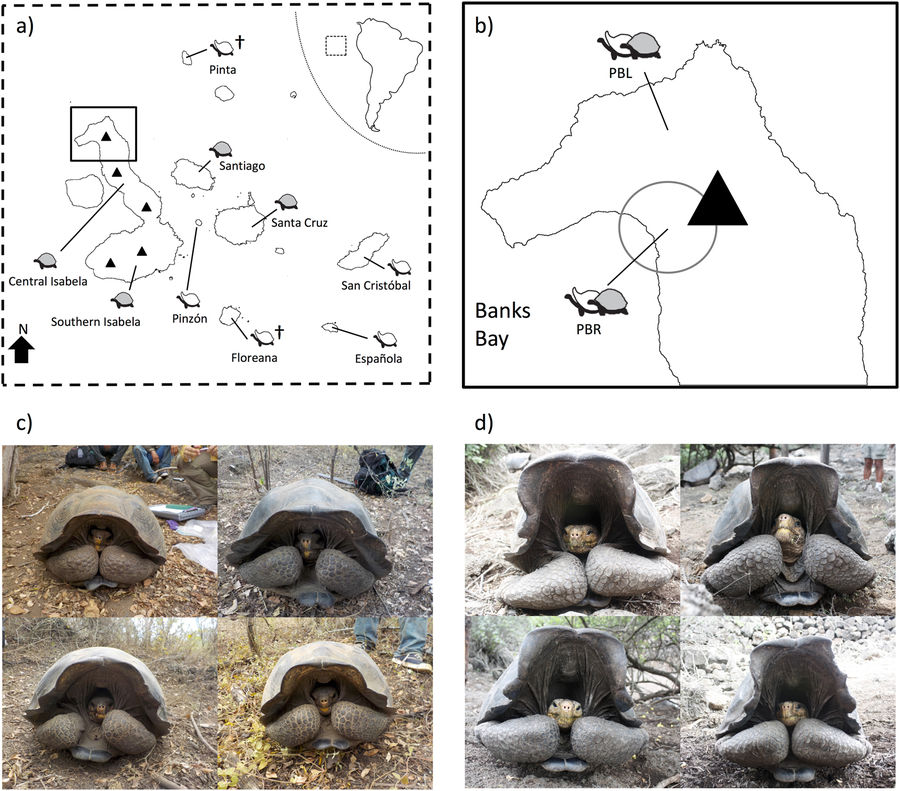
ISSN 2045-2322 (online)
The Miracle of Science Rediscovered Floreana Galápagos Giant Tortoise
One of the most well-known residents of Galapagos Islands is the Giant tortoises for which the archipelago is named. What many people may not know is there have been 12 to15 or more different populations of Giant tortoises in the Galapagos Islands. Some of the species of Galapagos tortoises have gone extinct due to human activity. Whalers and pirates would hunt them to take the tortoises onboard their ships to keep for fresh meat and they were also hunted for oil. One of those species thought to be lost is the endemic Floreana tortoise.
Due to the freshwater found on Floreana Island and the establishment of “Post Office Bay”, Floreana was a common stop for whalers. It is thought this is the reason the Floreana tortoise was heavily hunted. At one time the island was set afire by accident by a crew member of one of the ships. These incidents played havoc on the wildlife of Floreana.
Through excessive genetic research of tortoises in remote areas in Galapagos, the scientists has identified tortoise populations with a high level of DNA of the thought to be extinct Floreana tortoise. (WOW) You see, the same whalers and pirates also carried tortoise to other islands and would offload them onto other islands in the Galapagos. This half hazard process of carrying tortoises from island to island has preserved some of the tortoise species thought to be lost.
The Galapagos National Park now has a great plan for the restoration of the Floreana Tortoise and repatriate the much needed giant herbivore back to Floreana Island to contribute to balancing the ecosystem on the island. This is a key factor in the island restoration program on Floreana. The Galapagos national park is creating a breeding program for the Floreana tortoise to bring it back from extinction.
As a result of the Yale University researchers’ findings, four breeding groups of tortoises were established in March of 2017. Each breeding group is composed of three females and two males. The anticipated results of this program are in approximately five years, offspring from these breeding groups will begin to be released on Floreana Island. The absent Floreana tortoise will return to their native island.
Make your plans today to come to Galapagos and experience the flora and fauna found nowhere else on earth.
Donna Daugherty is a long time permanent resident of the Galapagos Islands. She has worked as a consultant for the Charles Darwin Foundation and is a founding member of Ambiente Independiente. She is an entrepreneur owning and developing businesses for over 20 years. The owner of Torre Mar Galapagos Apartment Hotel serving guests in Galapagos.
